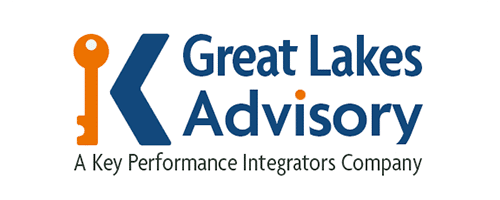Table of Contents
What Is a Crisis Management Plan?
Creating a crisis management plan means first knowing what one is. Essentially, it’s how your company intends to react to a particular crisis. It needs to include who is going to be involved and what actions they need to take or the responsibilities they have.
The whole idea behind a crisis management plan, or CMP, is to minimize the harm to your business so operations are restored as quickly as possible. A crisis can take many forms, but they typically threaten your organization on many simultaneous fronts, including strategic objectives, finances, reputation, and operations.
Why a Crisis Management Plan Is Important
A crisis management strategy is important because of what might happen if you don’t have one in place. People who are under the stress of a crisis might make bad decisions. Those poor choices might unintentionally make the crisis deeper, longer, or just worse.
Your company’s very survival might be contingent upon taking prompt and constructive steps in the right direction. According to FEMA, approximately half of small businesses never recover from a crisis and wind up shutting their doors permanently.
Having a crisis management plan in place keeps your people focused on what the top priorities of your company are. That will help minimize the uncertainty and fear that might actually compound any damage already present.
The exercises involved with crisis management planning help you and your professionals identify particular threats, minimize their chances or impact, and improve upon your organization’s ability to respond. There are a ton of benefits of business process optimization, some well-known, while others are unknown to most.
What Is the Goal of a Crisis Management Plan?
Before getting too bogged down in a crisis management workflow, it’s useful to know the whole purpose behind it. Primarily, the intention is to lessen the impact of a particular crisis in duration, effect, or both. Your crisis management plan should protect your professionals and any other involved stakeholders. You need to create one so your operations are preserved and productivity remains as strong as possible.
Finally, you should hopefully safeguard the reputation of your company as much as possible. Proper crisis planning means your organization has the endurance and resilience to weather a crisis for the long haul.
11 Steps for Developing a Crisis Management Plan
Not sure how to create a crisis management plan? There are specific crisis management steps you can follow to accomplish this. Early steps include risk assessment and activation protocols. From there, you need to figure out a chain of command and response protocols for the most common crisis situations that your organization might have to deal with. Flexibility and practicality are both essential since a crisis might not meet your expectations.
1. Begin with Analysis
Crisis management planning starts with business analysis. Identify every process in your company, and specifically look at the ones most likely to be impacted by a crisis. Designate what the start and end points of every process are, and also take note of what the desired outcome of any process is.
How would a process be impacted by a crisis? What alternatives would you have during an emergency to restore the process or keep it going in any way? In doing all this, you’ll identify every phase or step of a process, and you’ll probably find ways to improve their efficiency even in non-crisis times.
2. Identify Every Possible Crisis
Crisis response planning can’t predict every potential emergency, but it can identify the ones that are most likely to occur for your business. They might fall into categories such as organizational, financial, and personal. What potential impact can each have? How would each one influence your business?
Potentially negative impacts include lost sales, higher operating costs, media scrutiny, and upset customers. What scenarios would disrupt your company’s normal operations? From these scenarios, you can start mapping out specific warning signs that might foretell a pending crisis that is looming so you have some advance warning.
3. Reevaluate Your Company’s Performance
Your crisis management process isn’t just something that should be practiced or trained on every quarter. You also need to reevaluate how your company performs just as regularly. You never know when you might need to or be able to optimize various business processes, which means you need to look at them routinely. Three areas, in particular, are always worthy of emphasis.
- Waste elimination.
- Effective communication.
- Knowledge sharing.
Just catering to these three ideals on a regular basis will help your company be in a state of constant optimization.
4. Tighten Up Your Finances
Part of creating a crisis management plan involves tightening up your finances. This serves two purposes. First, you can become more efficient in the expense department, which makes your organization more agile in a crisis. Second, you create more profit, and that can be a financial reserve your company needs in a crisis.
- Use what’s already available. Make the most of existing assets to spare the expense involved with new investments and expenditures.
- Minimize any costs you can. Seek out all potential tax breaks. Renegotiate leases. Seek lower interest rates on company debt.
- Have a long game. Take your regular financial planning farther than ever before so you can start thinking ahead as much as you can.
5. Set Priorities
Part of knowing how to create a crisis plan is knowing what priorities to set. Prioritize the most important business processes and tasks that need attention during a crisis. Your business data can illustrate which ones those are. Remember customer satisfaction at all times.
Need help with crisis management planning? We’re here to help.
6. Do an Audit
Part of your crisis management workflow preparations needs to include performing an audit. Take stock of things as how they currently are, but also look into how they should be. The gap in between is the distance you need to cover with preparation, planning, and training before an actual crisis hits your organization.
7. Set Fresh Goals and Find Ways to Make Them Happen
Your company should have goals. They’re likely a combination of short- and long-term in scope. These are crucial to achieving specific objectives, and they need to be remembered in all kinds of crises, be they unpredictable or something you saw coming. Use all business data you have available to you to choose what you want to get done. Then, put together plans to get them done. You can utilize several tools and methods to redefine company objectives.
- SWOT analysis
- Brainstorming
- Feasibility analysis
- Market research
Need help from industry experts? Schedule an appointment with one of our consultants.
8. Put Your Plan into Place
The time will come when your corporate crisis management plan needs to be implemented. Several things need to be in place before any crisis hits if your company is to have resources and the ability to respond.
- Robust decision making
- Communication channels
- Software and IT systems
Automate any business techniques you can for the repetitive processes that can happen efficiently devoid of human intervention. Consider using new technology, be it blockchain or AI, to alert you of potential threats from outside or internally.
9. Stay Current with Active Trends
Always be ready to adapt your business to the new reality. There’s more going on than just what’s inside of your business. You’ll be dealing with your local market, the global economy, and any economic changes impacting every business.
Keep up with any and all changes that you can identify. They might be things you don’t want to deal with, and they might actually be harbingers of a potential crisis. Then again, they can be seeds of opportunity to do things in new and better ways. Keeping up with things can do a lot to prevent crises.
10. Train and Coordinate Your Team
A crisis plan will be executed far better and faster if your team has been trained on it already and is ready for anything that may happen. They’ll know who to turn to and when, so coordination during an actual crisis can happen more effectively. Time won’t be lost just setting up a command chain and communication channels.
Quarterly drills should be enough to keep everyone fresh on their roles and responsibilities in a crisis situation without unduly impacting everyone’s normal business activities. Reach out to business optimization specialists if you want help with training consulting solutions.
11. Enhance Your Plan Regularly
Hopefully, you’ll go a long time between two crises, though if you don’t, you will know it’s time to enhance your plan to the fullest. In fact, the right monitoring and prevention efforts might help you go longer between emergencies. This is a time when you might fall off the wagon, so to speak, in terms of crisis management planning, and it’s important to not let that happen for a host of reasons. However, you need to continually monitor your plans and know when to improve them. Metrics that help you accomplish this are as follows:
- Efficiency: Identify wasted resources. What are the best results you can get for minimal resource use?
- Productivity: This metric measures how much of a particular process you can finish in a set amount of time.
- Cycle Time: This is the entire length of time needed to finish a certain process, including all subprocesses.
- Turnaround Time: This is usually measured from the point of view of a customer in how long it takes for your organization to fulfill their request.
- Throughput: The rate of production over time.
- Error Rate: Your production cycle defect rate.
- Quality Rate: An estimate of how many products meet your company’s quality standards.
Your Checklist for Crisis Management Planning
As you complete your company’s crisis management plan, you need to verify that it’s both complete and clear. By verifying this, you are going to save yourself a lot of trouble in the long run. Every essential needs to be covered, and you must also evaluate the plan in terms of how easy it is and how readable users will find it. Make this more possible by using bullets, outlines, numbered lists, and a table of contents.
With scannable content, readers will understand and be able to follow the ideas more clearly. When you think you’re done, assess the plan based on specific questions.
-
- Does the plan align with the values and mission of your company?
- Do your team members have the tools to see the warning signs of a crisis?
- Is the contact information of all crisis team managers and stakeholders readily available?
- Are the most likely emergencies your organization might face represented in your crisis scenarios?
- Do you know what your core response action fundamentals are?
- Are there plans for crisis communications?
- Do you have clear signals for the start and finish of a crisis?
- Do you have assessment tools for the severity of a crisis?
- Is there a command center available?
- Are training plans in place and current?
- Are required backup resources identified and available?
Conclusion
Your business needs crisis management planning in place before you actually need it in response to an emergency. A big part of that can be optimizing your current business practices and operations right now. Utilizing technology can help you set things up so that many operations are able to continue with minimal supervision.
You can also reduce unnecessary expenses and activities to streamline your company for more flexibility and nimble response. If you want the guidance of business optimization consultants, then contact us to get exactly that.



